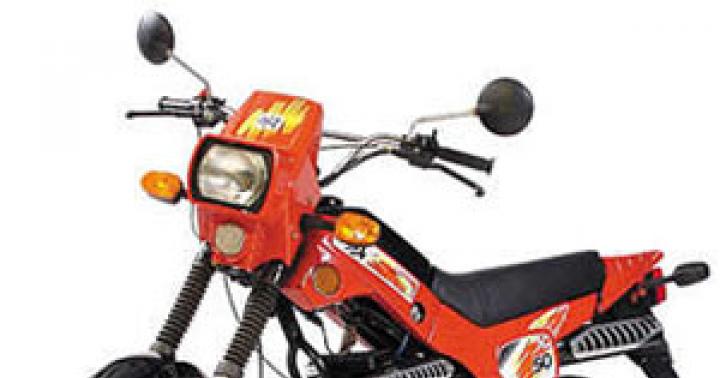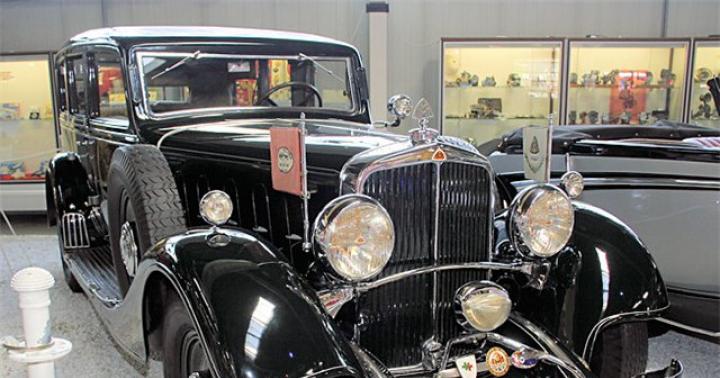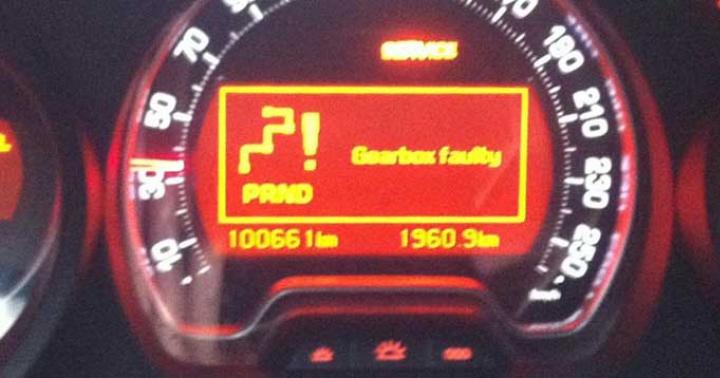What if cold air comes in from the 2114 stove? This question often arises from motorists. All parts in any car perform a special function specially designed for it, and when something becomes unusable, the car owner has to figure out what caused the breakdown.
What if there is cold air in the VAZ 2114 stove?
The cold air of the 2114 stove creates many problems. VAZ is a favorite car of many, but it also often has problems.
The task of the stove in the cabin of any car is to create a warm climate. A car stove is not a very complicated device, and the engine supplies heat. The pump sends the antifreeze through the heating and cooling systems, hot antifreeze enters the stove radiator, and the fan at this time passes the already heated air. Therefore, it becomes warm in the cabin. The antifreeze is then returned to the engine.
If in a VAZ 2114 the stove gives cold air when the mode is on, an urgent inspection of the entire car is necessary, otherwise a seemingly small breakdown can lead to serious repairs.
Most often, the reason lies in the cylinder head gasket.

If it was pierced, then even by eye it is possible to determine whether this is so. This will become clear if you make sure that in the expansion tank:
- air bubbles come in;
- an excessive amount of antifreeze is supplied, and it does not decrease (this is the reason for the instantaneous heating of the engine even with idle).
A hole in the gasket indicates that the thermostat needs to be checked, and there is a possibility that the operation of the large cooling circle is disrupted.
Most often, the gasket is broken, burning in the place between the cylinder and the cooling, then:
- antifreeze can get into the chamber;
- gases into the cooling system.
If cooled air is blowing, there is a concern that the heating hoses could not withstand the load while driving. When the engine got too hot, they burst, followed by the cylinder head gasket.

A pump malfunction can also cause the stove to be supplied with air that is far from warm. But this is not dangerous. Such a breakdown entails a malfunction of the cylinder head.
Because of this, the engine can overheat so much that the engine will not withstand, and it will face major repairs.
The road on dusty muddy roads complements car breakdowns. First of all, the radiator suffers. It can be partially, or even completely blocked from road dust. The air, which must, according to all the rules, pass through the grill, will in this case look for more optimal ways for itself and blow the radiator around the edges, and the stove, accordingly, will not delight the driver with warm air.
How to fix a stove if it blows cold air?
The resulting airiness in the stove is unlikely to disappear by itself - the radiator contains narrow tubes, and the antifreeze does not have such a strong pressure to eliminate the created plug.
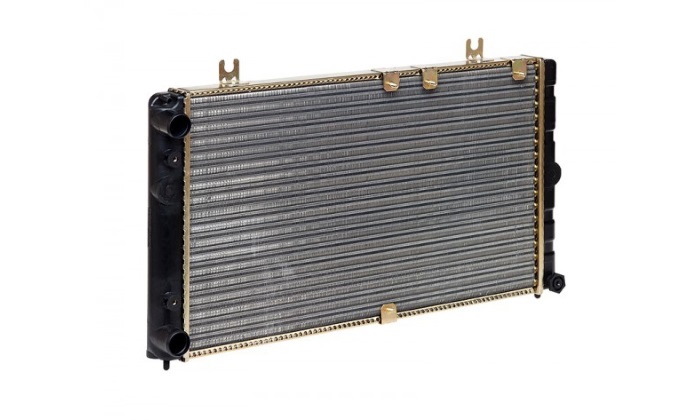
You can do it in the following way:
- warm up the engine, but only to such a state where it is possible to manually produce renovation work without burning your hands - serious injuries can be obtained;
- loosen the clamp located on the hose connected to the stove;
- carefully remove it from the tube, but only until a small gap appears, which will allow you to get rid of the formed plug.
A faulty tap can also interfere with heating. The reason is that it was high time to replace it due to the fact that it broke or clogged. To make sure that it is precisely in it that the reason lies - cold air enters the cabin instead of warm air - they check the inlet hose: it comes from the stove radiator.
In the event of a malfunction, it heats up and the output remains cold. If it is not possible to open the tap manually, then a new one must be installed.
If it turns out that the damper is still in good order, there is a threat that the radiator is clogged with scale. This suggests that it will have to be replaced.
If the faucet does not open, then there is a possibility that there is a problem with the cable drive, since the faucet operation depends on this type of drive. A weakened cable, which lengthens over time and wears out, will prevent the valve from opening even in the “open” position, or it will only open slightly.
You should check how the radiator works by warming up the engine, but you do not need to turn on the fan. At the same time, the temperature of the hoses should be checked.
Having figured out how the stove works, you can understand the reasons for its breakdown, but it will take time and certain skills to fix it, since the stove itself is located behind the front panel of the passenger compartment. This means that at least partially, but disassembly cannot be avoided.
VAZ-2114 is the second generation of the legendary Lada Samara. The car got a new look, but did not get rid of old problems. In particular, these are regular malfunctions of the cabin heater. It often happens that on the VAZ-2114 on the sides and on windshield... Naturally, this problem should be urgently addressed before the onset of the first cold weather. So, let's look at why the stove is blowing cold air on the VAZ-2114 and how to solve this problem.
Thermostat
It is a kind of valve that makes the coolant move in a large or small circle. It serves to quickly warm up the engine. But this part is also connected with the cabin heater. Until the thermostat opens to the "big circle", the stove will be cold. This problem is observed not only in Idling... On the VAZ-2114, the stove blows with cold air due to the cold coolant. Along with this, the motor itself suffers, since it is not in its own temperature conditions... The most optimal indicator is 80-90 degrees. If less, then the element opens ahead of time or is jammed altogether. In the latter case, it must only be replaced. Fortunately, the new thermostat for "Samara" is inexpensive - about 300 rubles.
Air in the system
This is the second reason why the stove blows cold air on the VAZ-2114. Also, due to this problem, the motor itself can overheat. Where can air come from in the system? The reason lies in unauthorized "suction" that can occur during repair operations of the system. So, very often air enters when replacing the same thermostat or stove faucet. How can I check if it is in the system? First, you should pay attention to the temperature sensor. But it does not always give an accurate result. The machine can work in normal mode, but there will be air in the radiator of the stove. How do you define it? It is enough to touch the rubber pipes that go to the heat exchanger. On the VAZ-2114, they are on the right, on the passenger side. In total, there are two pipes in the stove system. 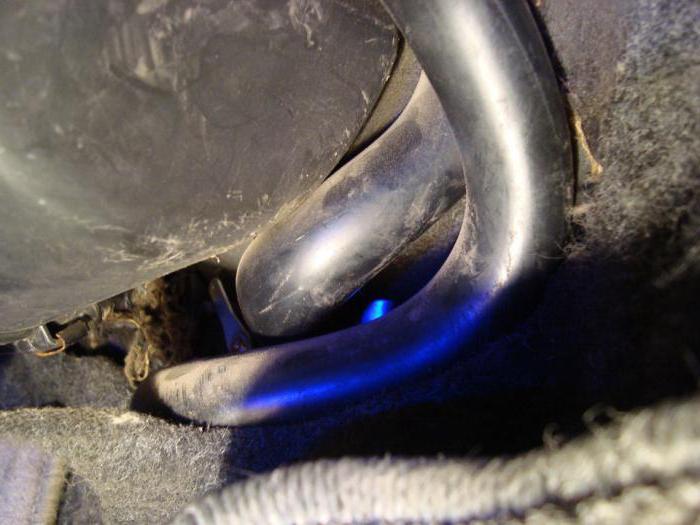 If air is felt when they are compressed, then it must be removed.
If air is felt when they are compressed, then it must be removed.
How to clear the plug from the system?
The solution to the problem is quite simple. Drive onto a hill with the front of the car. The higher the degree of rise, the better. Next, on the working motor, unscrew the plug with expansion tank and wait for all the air to leave the system. According to the laws of physics, air is lighter than liquid and tends to go up. So we will create the most favorable conditions for this. Three to five minutes of engine operation is enough to completely remove the plug from the system. Periodically, it should be gassed up to 2-3 thousand revolutions in order to create more pressure for the coolant (the more the crankshaft turns, the more often the pump rotates). It is also recommended to squeeze and unclench the air tube - this will speed up the process of oxygen release to the outside. But be careful - the temperature can reach 90 degrees. For safety reasons, cloth gloves should be worn.
Damper
This is another reason why on the VAZ-2114 the stove blows cold air into the legs and not only. The damper can be loose for several reasons. So, the control lever may fly off or the foam rubber may peel off. In the latter case, you need to stick a new one. It is desirable for high-quality glue.
On the VAZ-2114, the stove blows with cold air on the sides
You can see a photo of the side flaps below. 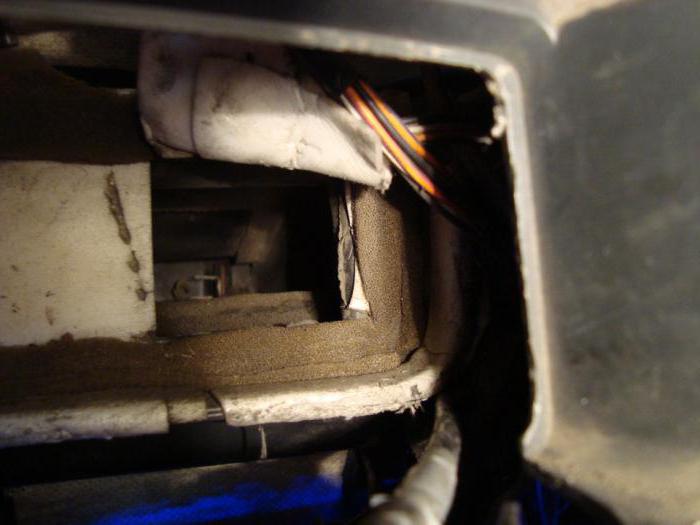 Owners of VAZ-2114 cars often face a similar problem: warm air flows to the window and legs, and cold air to the sides. What is the reason? The reason is the ill-conceived arrangement of the stove body. This problem was observed even in the Soviet G8. So, the nozzles of the side airflow channels are located below the damper itself. And as soon as the latter opens slightly, cold air immediately enters the damper.
Owners of VAZ-2114 cars often face a similar problem: warm air flows to the window and legs, and cold air to the sides. What is the reason? The reason is the ill-conceived arrangement of the stove body. This problem was observed even in the Soviet G8. So, the nozzles of the side airflow channels are located below the damper itself. And as soon as the latter opens slightly, cold air immediately enters the damper.
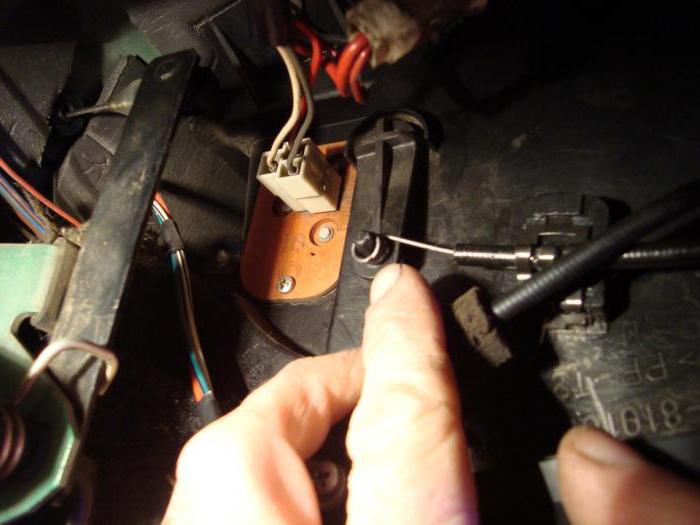 The side airflow control cable is located at the driver's feet, on the left side. If on the VAZ-2114 the stove is blowing cold air on the sides, tighten the cable. This can be done in two ways:
The side airflow control cable is located at the driver's feet, on the left side. If on the VAZ-2114 the stove is blowing cold air on the sides, tighten the cable. This can be done in two ways:
- With pliers, without dismantling the damper. Having got to the problem area, we tighten the element by several tens of degrees.
- With round nose pliers. This is a more efficient option. To do this, you need to remove the torso from the throttle lever and twist it a little. For convenience, it is recommended to partially disassemble the console. This way you can control the tightness of the closing of the dampers in place.
Lever arm
If on the VAZ-2114 the stove is blowing cold air even after tightening the cable, it is worth inspecting the state of the lever itself, which opens the damper. Despite the thickness of the metal, it can crack. In this case, the damper wedges in one place. Usually it is slightly open. As a result, the air from there blows at a completely different temperature. The way out of the situation is to buy a new lever. 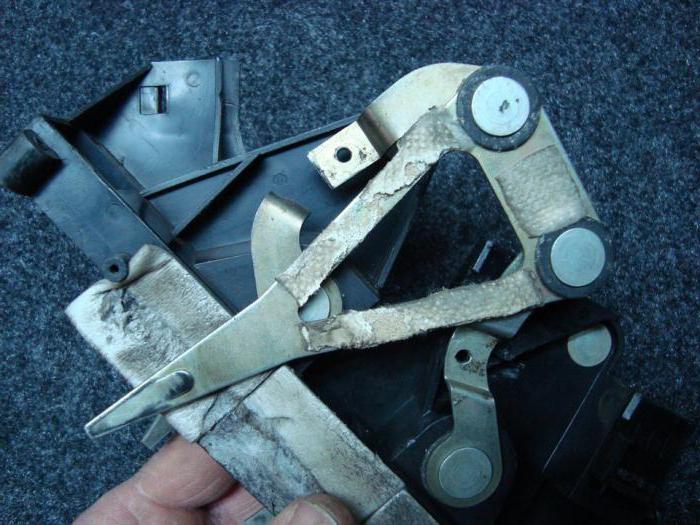 But often it is sold complete with a deflector. After replacing it, the stove works as expected. Hot air blows from all directions - to the legs, to the frontal, to the center and to the sides. Least often distorts the damper itself. There are few reasons for its deformation (the banal use of the stove at its maximum capabilities), but this problem should not be excluded from the list.
But often it is sold complete with a deflector. After replacing it, the stove works as expected. Hot air blows from all directions - to the legs, to the frontal, to the center and to the sides. Least often distorts the damper itself. There are few reasons for its deformation (the banal use of the stove at its maximum capabilities), but this problem should not be excluded from the list.
Conclusion
So, we found out for what reasons the stove blows with cold air on the VAZ-2114. As you can see, the problems can be different. But before buying new parts, you need to accurately determine the nature of the problem. Perhaps the fault is airlock... In the case of a cable, it is not necessary to replace it entirely. Above is a way to restore its performance with a simple tightening. But whatever reason arises, in any case it can be solved with your own hands with minimal spending.
The most pressing problem with which in winter period owners face domestic cars, Is a non-working stove. In winter, driving without heating is extremely undesirable, therefore, if the stove on your VAZ-2114 stops working, it needs to be urgently repaired.
To figure out why the stove does not work, you need to know its structure and how to troubleshoot. Unfortunately, the stove may not work for many reasons, so search problem place will take some time.
Repairing the stove yourself or asking for help at a service station - this should be decided by each motorist individually.
Causes
In order for troubleshooting to proceed as quickly as possible, you need to know possible reasons on which the stove stopped working. The most common are:
- inoperative thermostat;
- airlock;
- clogged or broken radiator;
- decrease in pressure in the system;
- insufficient amount of coolant;
- non-working electric motor;
- burned-out cylinder block gasket.
As you can see, the number of reasons for the occurrence of malfunctions is quite voluminous, so you need to consider each of them in expanded form.
Thermostat
First, you need to start the car again and check all the operating modes of the stove one by one. If there are no operating noises heating system, you will have to start repairs.
The thermostat is the most common reason for a stove not working, so you should start your search with it. Due to the inoperative thermostat, the cooling liquid circulating along the circuit cannot be cooled, which leads to the stove failure.
Airlock
An airlock appears when the engine is turned off. At this time, the temperature of the coolant decreases, as a result of which air enters through the upper part of the radiator, which gradually seeps into the thermostat. When the engine is restarted, it expels the accumulation of air into the radiator, resulting in an inoperative stove and a cold interior.
Tap
A broken faucet is a common cause of a stove not working. In most cases, it just doesn't open all the way. There are two reasons for this:
- The crane is completely out of order (must be replaced).
- The heater stopped working due to poor fixation or deformation of the heater cable. This problem can be solved by tightening the latter.
If a leak appears or the hot air supply disappears, the valve must be replaced. It is possible to detect a heater breakdown by stains with unpleasant odor on the floor of the passenger compartment or the appearance of a greasy film on the glass.
Clogged radiator
Your stove may refuse to work if dirt and debris has accumulated in the radiator. The problem will be detected by the weak air flow coming from the ducts. There are two ways to solve the problem: cleaning the radiator, and if it does not help, then replacing it with new item.
Radiator malfunctions
In most cases, car owners do not remember the existence of a stove in the cabin before the onset of cold weather. Only with the arrival of the first frost, many drivers, when trying to heat the cabin, realize that the radiator is not working properly or is outdated. This situation is often faced by drivers who bought a car in spring or summer and did not check the performance of the radiator. This problem can be solved only by replacement.
Low system pressure
If there is no required pressure in the system, the stove will not be able to work. The right pressure is generated by the pump, and it is not difficult to identify the problem associated with it. During the movement, all the heat from the engine enters the passenger compartment. This pump has worked its way out and needs to be replaced with a new one.
Lack of coolant
Often, the stove does not want to normally heat the interior due to insufficient amount of antifreeze in the tank. To solve this problem, you need to add coolant to the required level.
Burnt cylinder head gasket
Inefficient operation of the stove may appear due to a burned-out cylinder head gasket. You can establish the cause by some signs:
- the coolant smells like a mixture of gasoline and exhaust gases;
- v engine oil the smell of antifreeze appeared;
- thick white smoke comes out of the muffler.
The appearance of white smoke cannot go unnoticed, therefore, when this sign appears, it is necessary to check to replace the gasket.
Motor
The electric motor is actively involved in the operation of the stove, often breaks down and burns out. Replacing it with a new element is not in all cases the only solution to the problem. There is a chance that the motor has not burned out, then it can be repaired. It is necessary to check all the operating modes of the stove and make sure that the ignition relay is working.
In order to avoid problems with the stove in the future, you need to periodically disassemble and clean the radiator and pipes, change the filter in time, add antifreeze, securely fix the tap, and then your stove will delight you with heat without fail.
VAZ-2115 is updated version earlier "eights", "nines" and VAZ-21099. The three- and five-door hatchbacks VAZ-2113 and VAZ-2114 have the same characteristics. The interior heater device in these cars is the same, so if you are the owner of one of the listed models, then this article should be interesting for you.
Interior heater device VAZ-2115
The stove device is standard here:
- fan - it directs the air flow;
- radiator - heated from the engine enters it for cooling, and the heat generated at the same time is sent to the passenger compartment;
- heater tap - when you turn on the stove, the faucet opens and the antifreeze begins to flow into the stove radiator;
- damper rods - serve to adjust the air supply, as well as to heat the legs and windshield;
- heater resistor - serves to create additional resistance so that you can select the operating mode of the stove.
An important role is also played by the thermostat and the stove motor, which makes the fan spin. If the thermostat gets stuck, then the liquid will circulate only along the small or large circuit of the engine cooling system (and the interior heater is just one of it), so it will not have time to cool down and the engine will overheat. If the stove motor breaks down, then the fan blades will stop rotating and warm air will not flow from the air ducts.
The system is quite simple and has been used in the past on many vehicles, however, various interruptions in operation begin over time. Breakdowns lead to the fact that it is very cold in the cabin, hot air is not supplied to the glass and it fogs up, or your feet freeze because there is no airflow, and so on.
The stove is not blowing - what is the reason?
If the stove stops working, then, in fact, there can be many reasons:
- the cylinder head gasket is burnt out and the level of antifreeze drops sharply - take urgent measures, otherwise the engine may overheat;
- the thermostat is jammed - the coolant circulates along the small circuit very quickly and does not have time to cool;
- the heater radiator is clogged - in this case, the air enters the passenger compartment barely;
- the motor does not work;
- an air lock has formed - after the engine is turned off, air accumulates in the system and enters the cooling radiator, and after the engine is restarted, the radiator pump starts pumping this air into the heater radiator;
- the heater tap does not open completely - it may become clogged or the traction cable is weakened;
- the radiator pump does not create sufficient pressure in the system, respectively, the air either does not enter the passenger compartment at all, or it enters, but at a very low intensity.
The problem of failure of the traction, which opens the flaps for blowing the windshield or legs, can also affect. And another very common problem - the damper, which cuts off the flow of cold air from the outside, does not work correctly - in this case, you need to adjust the cable that controls its movement.
Malfunction symptoms
If you talk to the owners of cars of this family - VAZ-2109-21099 and 2113-2115 - then you can hear many flattering words from them about those workers who assembled the heating system and this Lada Samara itself at the plant in Togliatti.
So, if you recently bought such a car, turned on the stove and feel that hot air is coming from the center console, and barely warm from the side, lower and upper vents, then the whole point is that the air ducts and dampers are poorly assembled and there are cracks, warm air simply blows only from the central outlet, and heats the panel itself inside.
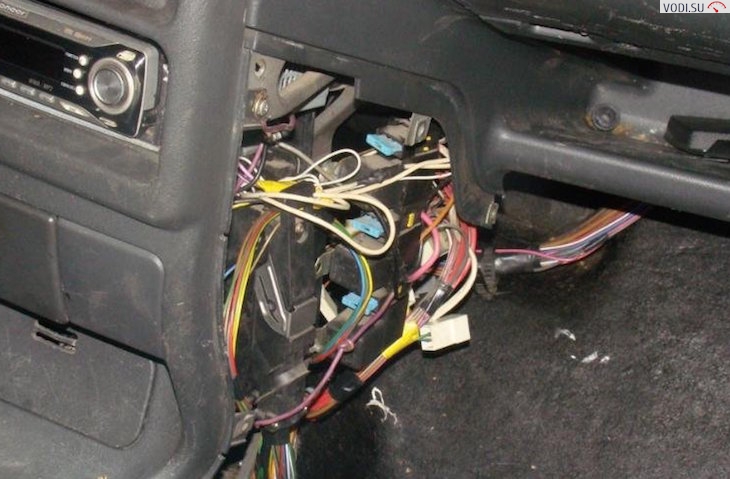
Let's be honest, we also had such a problem at one time. I had to literally disassemble the front panel and adjust the damper rods. The HOP / COLD damper does not close completely, so the warm air is dissipated under the panel. Also, air may not blow directly onto the windshield, which is why you have to wait a long time for it to thaw. The problem is again in the dampers.
There are a number of symptoms that indicate a particular problem:
- cold air blows at idle - the pump does not work well or the radiator of the stove is clogged;
- cold pipes - if the radiator pipes of the cooling system are cold (lower), this indicates a jammed thermostat and the antifreeze circulates in a closed loop. It may also indicate that the heater faucet is not fully opened or clogged;
- cold air is blowing from the side deflectors - adjust the dampers and rods. Some drivers advise choosing a more efficient fan from a foreign car.
Heating the interior of Lada Samara is a common problem for owners. Do not forget that everything is connected in the car, so keep an eye on the level of antifreeze, blow out the radiators from time to time - how to do this on our website.
Full domestic auto industry"Car diseases", but once you learn about the solution to these "diseases", things get a little better. Basically, these are some little things that make up the whole idea of the car as a whole.
This is exactly the case: the most typical disease of the VAZ-2114 is the stove, which also stops the windshield. And first of all, the owners of the VAZ-2114 are looking for the reason under the hood (they close the radiator, “cover” the engine with their grandfather sweatshirt, change the thermostat, even look for a solution to the problem of cold air from the stove in replacing the coolant), and the reason may be in a completely different place.
Diagnostics
The most important thing in the repair is a competently carried out diagnostics, identifying the primary cause of the malfunction. We'll start with the engine compartment. Checking the coolant level. We start the engine and warm it up to operating temperature. If the engine picks up temperature and the pipe is warm before the thermostat, and after it is cold, this means that the thermostat is working properly and the problem is not in the engine cooling system, but in.
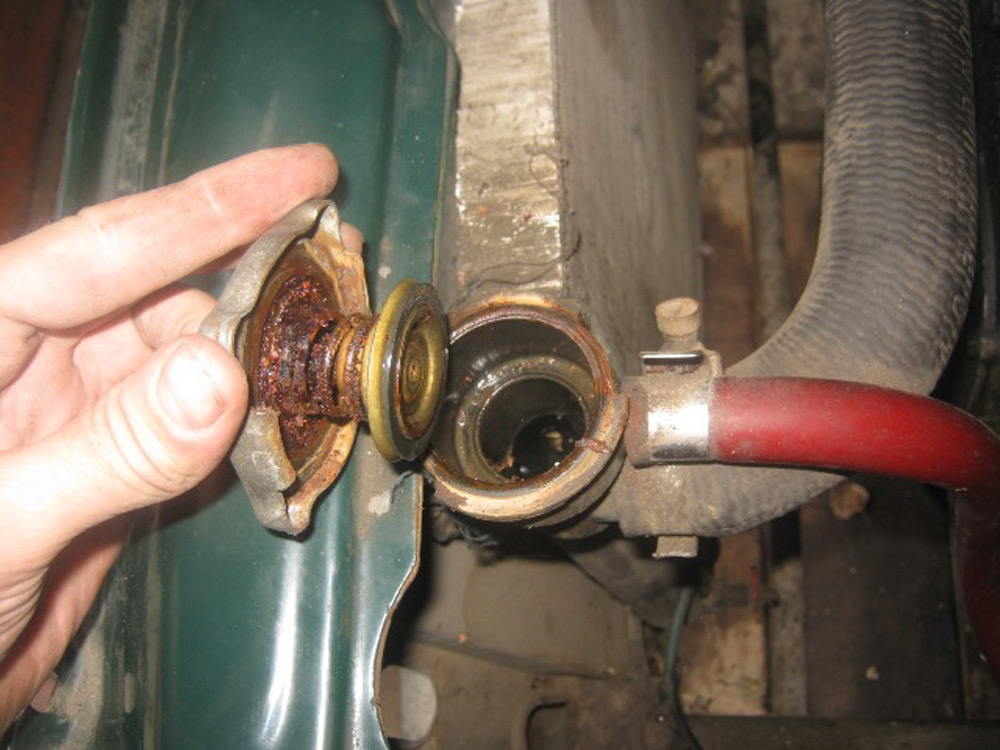
Reason # 1
The control cable is loose or came off.
Solution
- Disassemble side panel from the driver's side.
- There is a flap control lever on top. It is approached by a cable from the control lever on the center console (cold - hot).
- We visually inspect the cable itself and the damper control lever.
- If everything is whole, then it just stretched out.
- We unscrew the cable bracket and remove it from the lever.
- We take the cable eyelet with round-nose pliers and turn it clockwise to make the cable shorter.
- Putting everything together in reverse order.
- Without assembling the side panel, we check.
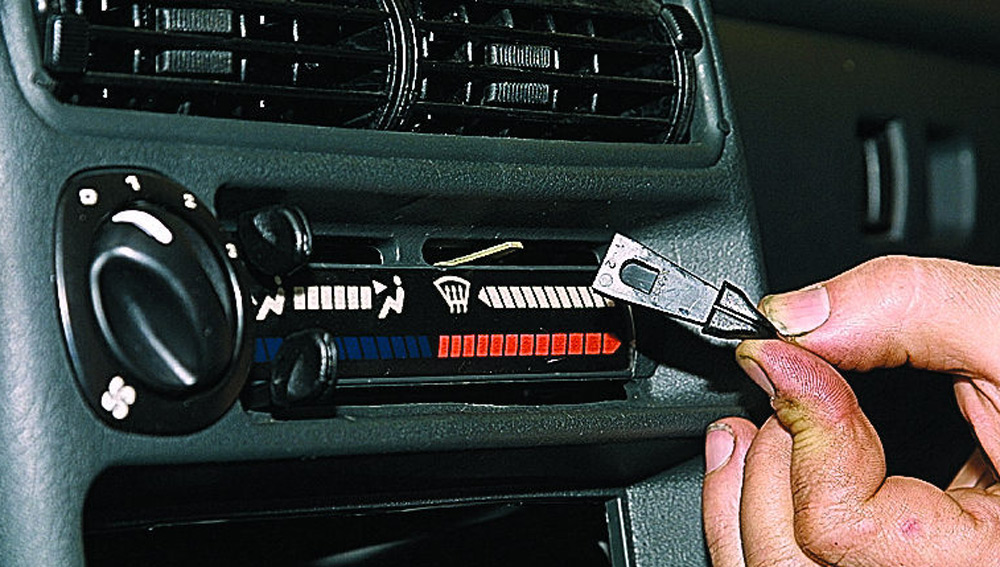
In most cases, the cause of the malfunction is precisely in the cable, if the problem has not been solved and, then we will understand further.
Reason # 2
The air ducts and dampers are poorly assembled and there are gaps between the joints. The air ducts themselves can be very broken in places of bends and do not allow air to pass through, then warm air simply blows only from the central deflectors and heats the panel itself inside.
Solution
- We inspect the air ducts. If there are cracks and breaks, then it is better to replace the air duct with a new one.
- self-adhesive foam rubber.
